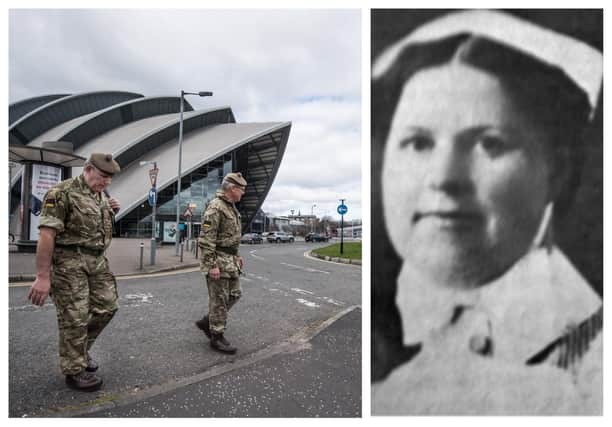The brave nurse who is honoured at Glasgow's new coronavirus hospital


Nursing Sister Louisa Jordan, of Maryhill, Glasgow, travelled to Serbia in December 1914 but died from typhus just three months later after looking after a colleague and friend who became infected.
Her sacrifice is remembered every year in Serbia at a special dedication service.
Advertisement
Hide AdAdvertisement
Hide AdNow, she is to be remembered widely in Scotland with Glasgow’s temporary hospital, which is now being set up at the SEC in response to the coronavirus crisis, to be called NHS Louisa Jordan.
Health Secretary Jeane Freeman told the Scottish Parliament: “She is a person who has perhaps up until now been better remembered in Serbia than in Scotland. This hospital is a fitting tribute to her service and her courage.”
The daughter of a paint mixer, Sister Jordan first worked as a mantle maker before qualifying as a nurse and moving to Manchester.
Returning to Scotland, she worked at Shotts Fever Hospital before moving to Buckhaven in Fife, where she served the mining community as a Queen’s Nurse.
She signed up with the Scottish Women’s Hospital, organised by the Womens’ Suffrage Societies, on 1 December 1914.
By the middle of that month, she was travelling with the 1st Serbian unit at a time when Serbia had lost the opening battlefield exchanges of WW1.
But as they pushed nearer, the Serbs had gone on the offensive and pushed back the Austrian/Hungarian forces, claiming the first victory of the conflict.
The nursing unit was set up at Kraguievac, 100 miles south of Belgrade. Fighting was minimal but medical supplies were in shortage. Then, in February, typhus arrived.
Advertisement
Hide AdAdvertisement
Hide Ad“Some of the men looked barely human, they were so wasted with fever, and all were terribly filthy and verminous, All had poisoned wounds, but the worst of it was that, the bed sores they got from neglect were worse than the original wound,” one account said.
Soon, Sister Jordan was running a typhus ward with nursing colleague Dr Elizabeth Ross among her patients. Dr Ross died with Sister Jordan then losing her own life to Typhus, aged 36, shortly thereafter.
A report in the Fifeshire Advertiser dated March 13, 1915 said: “From the few particulars to hand it appears that Nurse Jordan with great courage and devotion volunteered to nurse Dr Ross who was smitten down by typhus and thereby sacrificed her own life.”
Sister Jordan is buried in Chela Kula Military Cemetery, and commemorated at Wilton Church, Glasgow, and on the Buckhaven War Memorial.
The people of Serbia have never forgotten the courage of the SWH nursing team and they are remembered each year with a ceremony at Kraguievac.
